This article was medically reviewed by Luba Lee, FNP-BC, MS. Luba Lee, FNP-BC is a Board-Certified Family Nurse Practitioner (FNP) and educator in Tennessee with over a decade of clinical experience. Luba has certifications in Pediatric Advanced Life Support (PALS), Emergency Medicine, Advanced Cardiac Life Support (ACLS), Team Building, and Critical Care Nursing. She received her Master of Science in Nursing (MSN) from the University of Tennessee in 2006.
There are 13 references cited in this article, which can be found at the bottom of the page.
wikiHow marks an article as reader-approved once it receives enough positive feedback. This article has 78 testimonials from our readers, earning it our reader-approved status.
This article has been viewed 10,261,012 times.
A congested or stuffy nose happens when the membranes inside your nostrils become inflamed, often due to a cold, the flu, or allergies. Additionally, you’ll likely experience mucus discharge, which your body produces to protect you from illness. Unfortunately, a stuffy nose can be very annoying and may make it hard for you to breathe. Luckily, you can get relief for yourself or your baby using at-home treatments. However, seek medical care if you show signs of infection, such as congestion, discharge, or a fever, or if your infant has a stuffy nose.
Steps
Getting Immediate Relief
-
1Take a hot shower to quickly thin out mucus. Steam helps to thin nasal secretions, which can make breathing easier. For a quick solution, close the bathroom door, jump in a hot shower, and let the steam work its magic. Hopefully, you’ll be feeling better in no time.[1]
- As an alternative, let a hot shower run while you simply sit in the bathroom with the door closed.
- A cool-mist humidifier can also help clear up a stuffy nose, so run one in your bedroom at night if you can. Make sure to clean it weekly.
- If you don't own a cool-mist humidifier, you can explore several options for purchase here.
-
2Use a saline spray or neti pot for a natural solution. Saline nasal sprays are simply salt water in a convenient applicator, so they’re safe for everyone, even pregnant women, to use. The water will flush out the mucus and soothe the inflammation in your nose.[2]
- Follow the instructions on the packaging. Typically, you’ll administer 1-2 sprays or drops every 2 to 3 hours.
- Alternatively, use a neti pot to flush out your sinuses. However, make sure you never fill a neti pot or create a saline solution with tap water as it may contain bacteria or amoebas that can cause life-threatening illness. Also, keep your neti pot very clean by washing it after each use.
- You can find saline spray options for purchase here and neti pot options here.
Advertisement -
3Use nasal adhesive strips to open up your nostrils at night. These thin white strips go over the bridge of your nose and are meant to manually widen your nostrils just enough to help you breathe easier. Pick up a pack and apply one to see if it helps you sleep better by reducing your congestion.[3]
- These are often marketed as anti-snoring strips–you can find options available for purchase here.
-
4Put a warm compress over your nose or forehead to reduce sinus pressure. Heat may help to reduce pressure by opening up your sinuses. Wet a washcloth with water that's as hot as you can stand, lie down, and lay the cloth over the bridge of your nose so that it covers your sinuses but leaves the path to your nostrils clear. Alternatively, place the cloth over your forehead. Rewet the washcloth when it starts to feel uncomfortably cold.[4]
- It might take a few rounds of reheating the washcloth for you to feel any benefit, so be patient. Try using a compress while you do something relaxing, like listening to music or watching TV.
-
5Take an OTC decongestant or antihistamine if recommended by your doctor. Depending on the cause of the stuffiness, you might be able to find some relief with an over-the-counter (OTC) medication. If your child between the age of 4 to 12 is sick, choose a decongestant or antihistamine formulated especially for children. Be sure to speak to your doctor before taking medication of any kind and ask what they recommend for your specific symptoms.[5]
- If you have a cold, a decongestant can ease the swelling and inflammation in your nasal passages, leading to easier breathing. You can take this medication orally, as a pill or liquid, or use a decongestant nasal spray. Be aware that decongestant nasal sprays are only recommended for 3 consecutive days of use due to the risk of rebound congestion, while oral decongestants can be taken for up to 5 to 7 days.
- You can find decongestant options online for purchase here.
- If you're suffering from allergies, such as hay fever, get an antihistamine, such as Claritin, Zyrtec, or Allegra, or the generic equivalent of one of these medications. An antihistamine will both relieve congestion and take care of other symptoms, like sneezing. Be aware that some antihistamines can make you feel tired. Look for non-drowsy options to take during the day and wait to drive or use heavy machinery until you see how the antihistamine affects you.
- Flonase and Nasacort sprays, which contain corticosteroids, may also be helpful if your nose is congested due to allergies. Corticosteroids help reduce inflammation.
Modifying Your Routine
-
1Blow your nose gently. If your nose is stuffed up but not dripping, or mucus isn't coming out easily when you blow your nose, don't force it. Your impulse may be to blow your nose until you expel some mucus, but it's best if you leave the tissues alone. Only blow your nose when it is running.[6]
Note: Blowing hard repeatedly will make the delicate membranes inside your nostrils get more inflamed, and can quickly lead to increased stuffiness. It seems counter-intuitive at first, but you really will feel better if you use tissues less often.
-
2Hydrate yourself to thin out the mucus. Drinking lots of fluids when you’re sick can help clear up a stuffy nose. Stick with plain water, herbal tea, or broth and keep a water bottle or mug on hand at all times to encourage hydration.[7]
- Comfortably hot beverages are especially helpful for thinning out mucus.
- Avoid sugary beverages like juice and soda since they don't contain any helpful nutrients or electrolytes your body needs. Sugar may also prevent your immune system from functioning properly.
- Stay away from caffeine, such as in coffee, as it can be dehydrating.
-
3Prop up your head when you’re resting. Lying flat on your back can cause mucus to build up while you rest or sleep. Elevate your head with a few pillows or snooze in a recliner when you have a stuffy nose.[8]
- If you typically sleep on your stomach or side, try sleeping on your back and elevating your head while you're sick.
-
4Stay away from irritants. Irritants like cigarette smoke can make a stuffy nose worse. Avoid smoking or being around others who smoke when you’re congested. If your stuffy nose is due to allergies, do your best to avoid common allergens, like dust and pet dander.[9]
- If you need help to quit smoking, speak to your doctor or contact the Quitline at 1-800-QUIT-NOW.
Treating Babies and Toddlers
-
1Use saline drops to loosen the mucus. Place the infant on a flat surface and position a rolled towel beneath their shoulders to tip their head back. Place a few drops of saline solution in each nostril. Saline solution breaks up the mucus so it can be removed, allowing your little one to breathe more easily.[10]
- To make your own saline solution, mix 1/4 teaspoon (1.42 grams) of non-iodized salt with 1⁄2 cup (120 mL) of filtered or distilled lukewarm water.
- If you only have tap water on hand, boil it and allow it cool before using to make a saline solution. Otherwise, you could introduce bacteria or amoebas into your child’s sinus cavity, which, while rare, can be life-threatening.
-
2Drain the mucus to make it easier for your child to breathe. If your child is old enough to blow their nose, have them do so gently. If you have an infant, use a bulb syringe to remove excess mucus from each nostril. First, squeeze out the air in the bulb, then carefully insert the tip into one of the baby’s nostrils. Release the bulb to suck up the mucus, then remove it from the nostril and squeeze out the mucus onto a tissue. Repeat on the other side.[11]
- Alternative, roll a tissue into a small cone and swab it around the nostrils. Do not insert cotton swabs into an infant's nose.
-
3Put a cool-mist humidifier in your baby’s room. A cool-mist humidifier can soften mucus and ease your child’s breathing. Set up the humidifier in their bedroom and run it throughout the night. If possible, fill the humidifier with filtered water. Be sure to clean it weekly to keep germs from spreading.[12]
- However, if you don’t have a humidifier, you can run a hot shower and sit with your baby in the bathroom (not the shower itself) so the steam loosens up the mucus. This is especially helpful if your child has a croupy cough.[13]
Warning: Avoid using warm-mist humidifiers, as these are actually more likely to breed bacteria and distribute germs throughout your home.
-
4Elevate your baby’s head while they’re sleeping. Roll up a towel and place it under your child’s crib mattress. Rest their head on the elevated portion of the mattress to allow mucus to drain away rather than clog up their nostrils as they sleep.[14]
- Never elevate your child’s head using a pillow as this can increase the risk of Sudden Infant Death Syndrome (SIDS).
-
5Do not give your child cold medicine. Over-the-counter cold medicine is not suitable for children under 4 years of age. In fact, decongestants have even been linked to irregular heartbeats as well as irritability. Try to keep your child comfortable as best you can, and call their pediatrician if you have any concerns.[15]
When to Seek Medical Treatment
-
1Get immediate care for sinus pain coupled with yellow or green discharge. Yellow or green discharge often means you have an infection, though this isn’t always the case. However, your doctor needs to rule out an infection or prescribe the right type of treatment.[16]
- Keep in mind that you can develop a bacterial infection due to sinus drainage, so what started out as a stuffy nose due to allergies or a cold can turn into a bacterial infection. If this happens, your doctor can prescribe a round of antibiotics that will have you feeling better much quicker than going without treatment.
- Rarely, you may experience blood-tinged or red discharge. If this happens, see your doctor immediately.
-
2Visit your doctor if your congestion continues longer than 10 days. A stuffy nose should go away within a week, so you may have an infection if yours lasts longer than 10 days. Your doctor can rule out other possible causes, such as the flu, and prescribe treatment if you need it.[17] Here are some other symptoms you may be experiencing if you have an infection:[18]
- Fever over 101.3 °F (38.5 °C)
- Sore throat
- Runny or stuffy nose
- Congestion
- Headaches
- Body aches
- Fatigue
-
3Call your doctor for advice if your baby is under 3 months old. It’s common for babies to get stuffy noses often, as their immune system is just starting to develop. However, a stuffy nose due to a cold or allergies can quickly become serious for a young infant. Fortunately, your doctor can advise you on how to provide the best care for your baby to help their recovery.[19]
- Your doctor may advise you to continue caring for your baby at home.
- If your baby has a fever above 100.4 °F (38.0 °C), ask your doctor for a same-day appointment or take your baby to an urgent care center. A fever indicates that they may have an infection, so it’s best to make sure your baby doesn’t need extra treatment.
Expert Q&A
Did you know you can get expert answers for this article?
Unlock expert answers by supporting wikiHow
-
QuestionIs it better to sniff or blow your nose?
 Monica Kieu, DO, FACSDr. Monica Kieu is a board certified Otolaryngologist and Specialist in Facial Plastic and Reconstructive Surgery in Los Angeles, California. Dr. Kieu received a BS in Anthropology from the University of California, Riverside and earned her medical degree (DO), with honors, from Western University of Health Sciences in Pomona. She then completed her residency in Otolaryngology-Head and Neck Surgery at Michigan State University/Detroit Medical Center, where she served as chief resident. Dr. Kieu also completed a prestigious fellowship in Facial Plastic and Reconstructive Surgery at the University of Toronto. She is a member of the American Academy of Otolaryngology-Head and Neck Surgery, American Osteopathic Colleges of Ophthalmology and Otolaryngology-Head and Neck Surgery, American Academy of Cosmetic Surgery, American Academy of Facial Plastic and Reconstructive Surgery, and the American Rhinologic Society. Dr. Kieu was recently named one of LA’s Top Docs by Los Angeles Magazine.
Monica Kieu, DO, FACSDr. Monica Kieu is a board certified Otolaryngologist and Specialist in Facial Plastic and Reconstructive Surgery in Los Angeles, California. Dr. Kieu received a BS in Anthropology from the University of California, Riverside and earned her medical degree (DO), with honors, from Western University of Health Sciences in Pomona. She then completed her residency in Otolaryngology-Head and Neck Surgery at Michigan State University/Detroit Medical Center, where she served as chief resident. Dr. Kieu also completed a prestigious fellowship in Facial Plastic and Reconstructive Surgery at the University of Toronto. She is a member of the American Academy of Otolaryngology-Head and Neck Surgery, American Osteopathic Colleges of Ophthalmology and Otolaryngology-Head and Neck Surgery, American Academy of Cosmetic Surgery, American Academy of Facial Plastic and Reconstructive Surgery, and the American Rhinologic Society. Dr. Kieu was recently named one of LA’s Top Docs by Los Angeles Magazine.
Board Certified Otolaryngologist
-
QuestionCan I blow my nose even if a few minutes ago the mucus had blood in it?
 Zora Degrandpre, NDDr. Zora Degrandpre is a Natural Health Doctor and Licensed Naturopathic Physician in Vancouver, Washington. She is a grant reviewer for the National Institutes of Health and the National Center for Complementary and Alternative Medicine. She received her ND from the National College of Natural Medicine in 2007.
Zora Degrandpre, NDDr. Zora Degrandpre is a Natural Health Doctor and Licensed Naturopathic Physician in Vancouver, Washington. She is a grant reviewer for the National Institutes of Health and the National Center for Complementary and Alternative Medicine. She received her ND from the National College of Natural Medicine in 2007.
Natural Health Doctor You are probably blowing too hard and breaking small blood vessels in your nose. You should try to be more gentle, blowing your nose-- try using steam or a hot compress before you blow your nose to loosen up the mucus, making it easier to blow out. Also, try blowing only one nostril at a time. You do not want to blow your nose so hard that it causes a nose bleed. If your nose does start to bleed, pinch your nose with your thumb and index fingers to get it to stop bleeding. Use a hot compress or steam before you try and blow it again. Also, make sure you drink at least 8-10 eight ounce glasses of water when you are stuffy. You can also try a NetiPot or nasal wash product.
You are probably blowing too hard and breaking small blood vessels in your nose. You should try to be more gentle, blowing your nose-- try using steam or a hot compress before you blow your nose to loosen up the mucus, making it easier to blow out. Also, try blowing only one nostril at a time. You do not want to blow your nose so hard that it causes a nose bleed. If your nose does start to bleed, pinch your nose with your thumb and index fingers to get it to stop bleeding. Use a hot compress or steam before you try and blow it again. Also, make sure you drink at least 8-10 eight ounce glasses of water when you are stuffy. You can also try a NetiPot or nasal wash product. -
QuestionI cannot fall asleep with my stuffy nose. How should I get enough sleep to get better?
 Mitzi Scotten, MDDr. Scotten is a board certified Pediatrician in Arizona. She received her MD from the University of Kansas in 1993 and completed her Pediatric residency at Kosair Children’s Hospital. Dr. Scotten was the director of the Pediatric Cystic Fibrosis clinic at the University of Kansas, was voted as a Kansas City Star “Top Doc” for 5 years, and has been selected to the National Board of Medical Examiners.
Mitzi Scotten, MDDr. Scotten is a board certified Pediatrician in Arizona. She received her MD from the University of Kansas in 1993 and completed her Pediatric residency at Kosair Children’s Hospital. Dr. Scotten was the director of the Pediatric Cystic Fibrosis clinic at the University of Kansas, was voted as a Kansas City Star “Top Doc” for 5 years, and has been selected to the National Board of Medical Examiners.
Board Certified Pediatrician If you are having trouble sleeping, then it may be best to find out why your nose is stuffy. It might be due to a cold or it could be allergies. Your doctor should be able to help you figure this out. If your stuffy nose is due to allergies, then sleeping with your head slightly elevated, washing sheets and pillows regularly, and not sleeping with pets in your bed are all helpful. Before bed, you can also use an over-the-counter nasal saline spray to rinse out allergens and any mucous that has built up during the day.
If you are having trouble sleeping, then it may be best to find out why your nose is stuffy. It might be due to a cold or it could be allergies. Your doctor should be able to help you figure this out. If your stuffy nose is due to allergies, then sleeping with your head slightly elevated, washing sheets and pillows regularly, and not sleeping with pets in your bed are all helpful. Before bed, you can also use an over-the-counter nasal saline spray to rinse out allergens and any mucous that has built up during the day.
Warnings
- Be careful when using steam or a steam inhaler, as boiling steam can cause nasty scalds.⧼thumbs_response⧽
- Avoid using a warm-mist humidifier, which can harbor bacteria.⧼thumbs_response⧽
- Be aware that decongestant medications that contain pseudoephedrine are contraindicated for some people.⧼thumbs_response⧽
- When making your own saline solution for a nose spray or neti pot, make sure to use filtered or distilled water to prevent illnesses due to bacteria or amoebas. If you must use tap water, boil it and let it cool before making the saline solution.⧼thumbs_response⧽
- Contrary to popular belief, eating spicy foods can actually make your congestion worse.[20]⧼thumbs_response⧽
- Avoid using mentholated vapor rubs, as there's no evidence that they relieve congestion and the ingredients can actually be toxic.[21]⧼thumbs_response⧽
References
- ↑ https://newsnetwork.mayoclinic.org/discussion/home-remedies-steps-to-help-relieve-sinusitis/
- ↑ https://newsnetwork.mayoclinic.org/discussion/home-remedies-steps-to-help-relieve-sinusitis/
- ↑ https://www.ncbi.nlm.nih.gov/pmc/articles/PMC6109978/
- ↑ https://www.cdc.gov/antibiotic-use/community/for-patients/common-illnesses/sinus-infection.html
- ↑ https://www.mayoclinic.org/diseases-conditions/nonallergic-rhinitis/diagnosis-treatment/drc-20351235
- ↑ https://www.health.harvard.edu/staying-healthy/what-to-do-about-sinusitis
- ↑ https://www.mayoclinic.org/symptoms/nasal-congestion/basics/when-to-see-doctor/sym-20050644
- ↑ https://www.health.harvard.edu/staying-healthy/what-to-do-about-sinusitis
- ↑ https://www.mayoclinic.org/symptoms/nasal-congestion/basics/when-to-see-doctor/sym-20050644
- ↑ https://www.nationwidechildrens.org/family-resources-education/700childrens/2015/12/what-kind-of-stuff-clears-up-a-stuffy-nose
- ↑ https://www.nationwidechildrens.org/family-resources-education/700childrens/2015/12/what-kind-of-stuff-clears-up-a-stuffy-nose
- ↑ https://www.nationwidechildrens.org/family-resources-education/700childrens/2015/12/what-kind-of-stuff-clears-up-a-stuffy-nose
- ↑ https://health.clevelandclinic.org/care-childs-croupy-cough/
- ↑ https://mft.nhs.uk/app/uploads/sites/4/2018/04/Bliss-Common-Winter-Illnesses.pdf
- ↑ https://www.nationwidechildrens.org/family-resources-education/700childrens/2015/12/what-kind-of-stuff-clears-up-a-stuffy-nose
- ↑ https://www.mayoclinic.org/symptoms/nasal-congestion/basics/when-to-see-doctor/sym-20050644
- ↑ https://www.mayoclinic.org/symptoms/nasal-congestion/basics/when-to-see-doctor/sym-20050644
- ↑ https://med.uth.edu/orl/2012/07/12/the-common-cold-viral-upper-respiratory-illness-viral-uri/
- ↑ https://www.mayoclinic.org/diseases-conditions/common-cold-in-babies/symptoms-causes/syc-20351651
- ↑ https://www.mayoclinic.org/diseases-conditions/nonallergic-rhinitis/symptoms-causes/syc-20351229
- ↑ https://www.mayoclinic.org/diseases-conditions/common-cold/expert-answers/nasal-decongestant/faq-20058569
About This Article
To clear a stuffy nose, take a long, hot shower with the door closed so the room fills up with steam, which can help decongest your nose. You can also try lying down and placing a hot, wet washcloth over the bridge of your nose to clear up the stuffiness. Or, you can eat some spicy food to quickly relieve your congestion. Also, try flushing out your nose with a saline solution using a spray bottle or a Neti pot. For more tips from our Medical co-author, like how to use medication to clear a stuffy nose, scroll down!


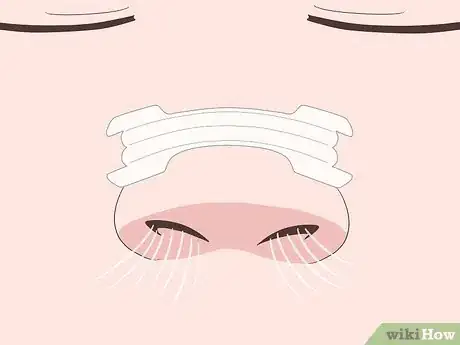
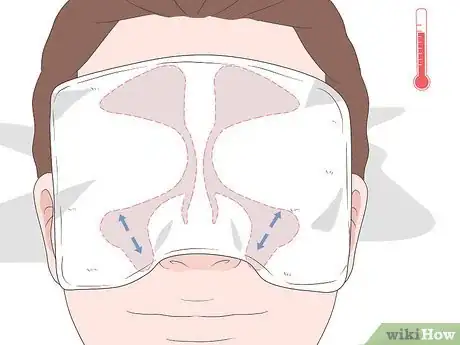


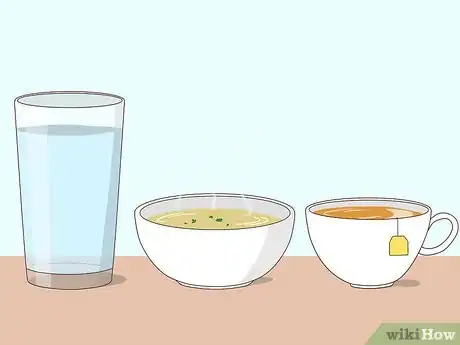
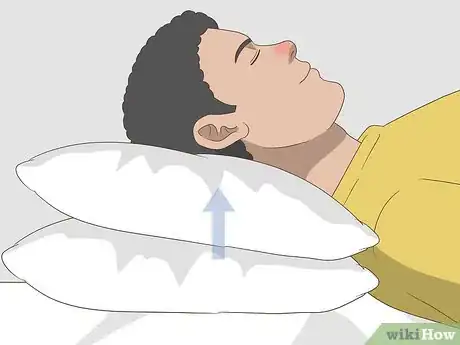
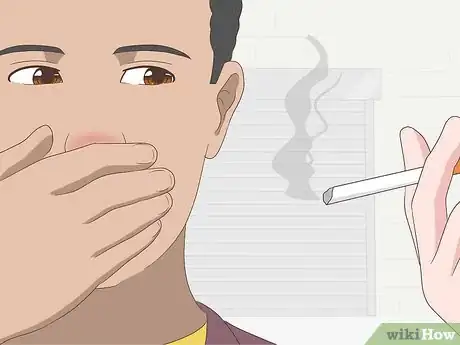
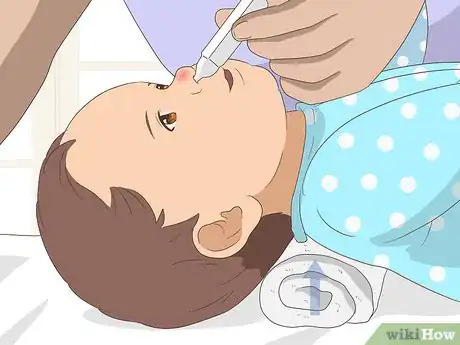
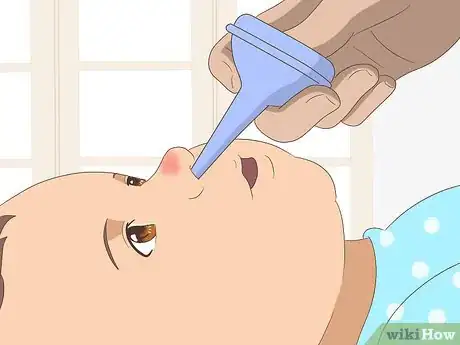
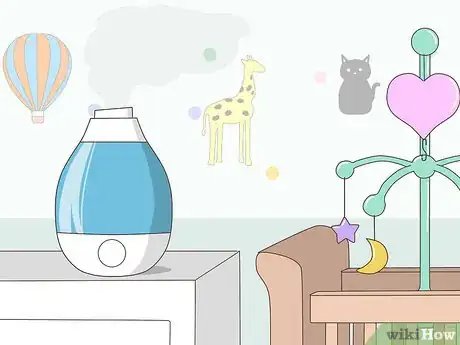
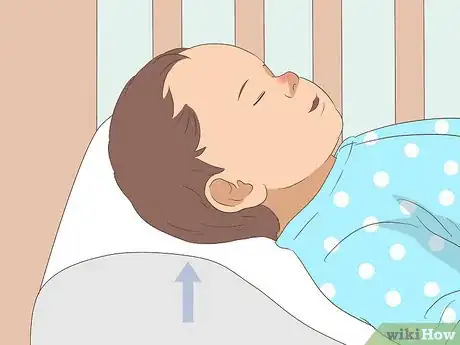
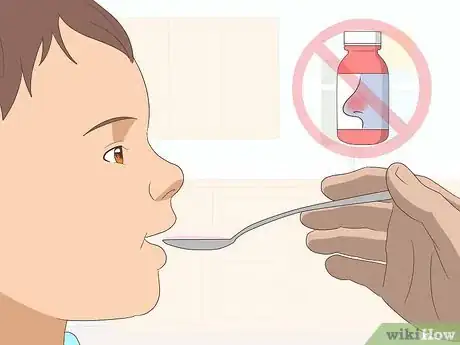

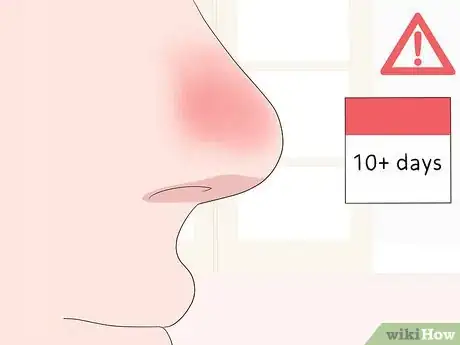
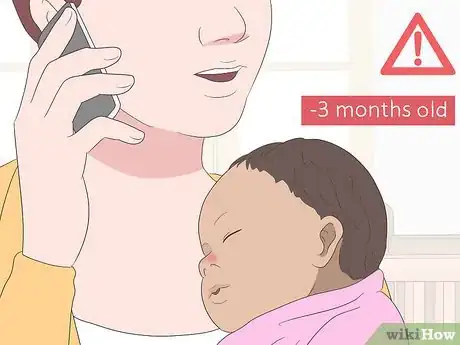




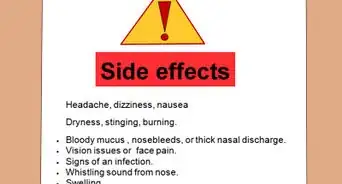
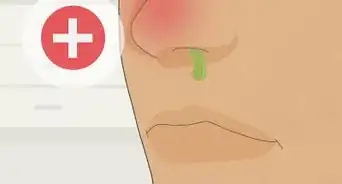
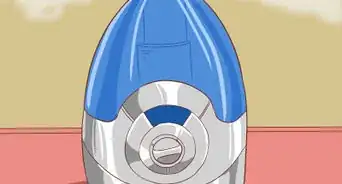
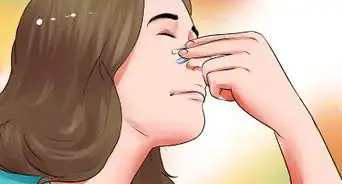

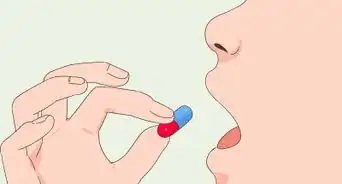


















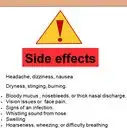



































Medical Disclaimer
The content of this article is not intended to be a substitute for professional medical advice, examination, diagnosis, or treatment. You should always contact your doctor or other qualified healthcare professional before starting, changing, or stopping any kind of health treatment.
Read More...